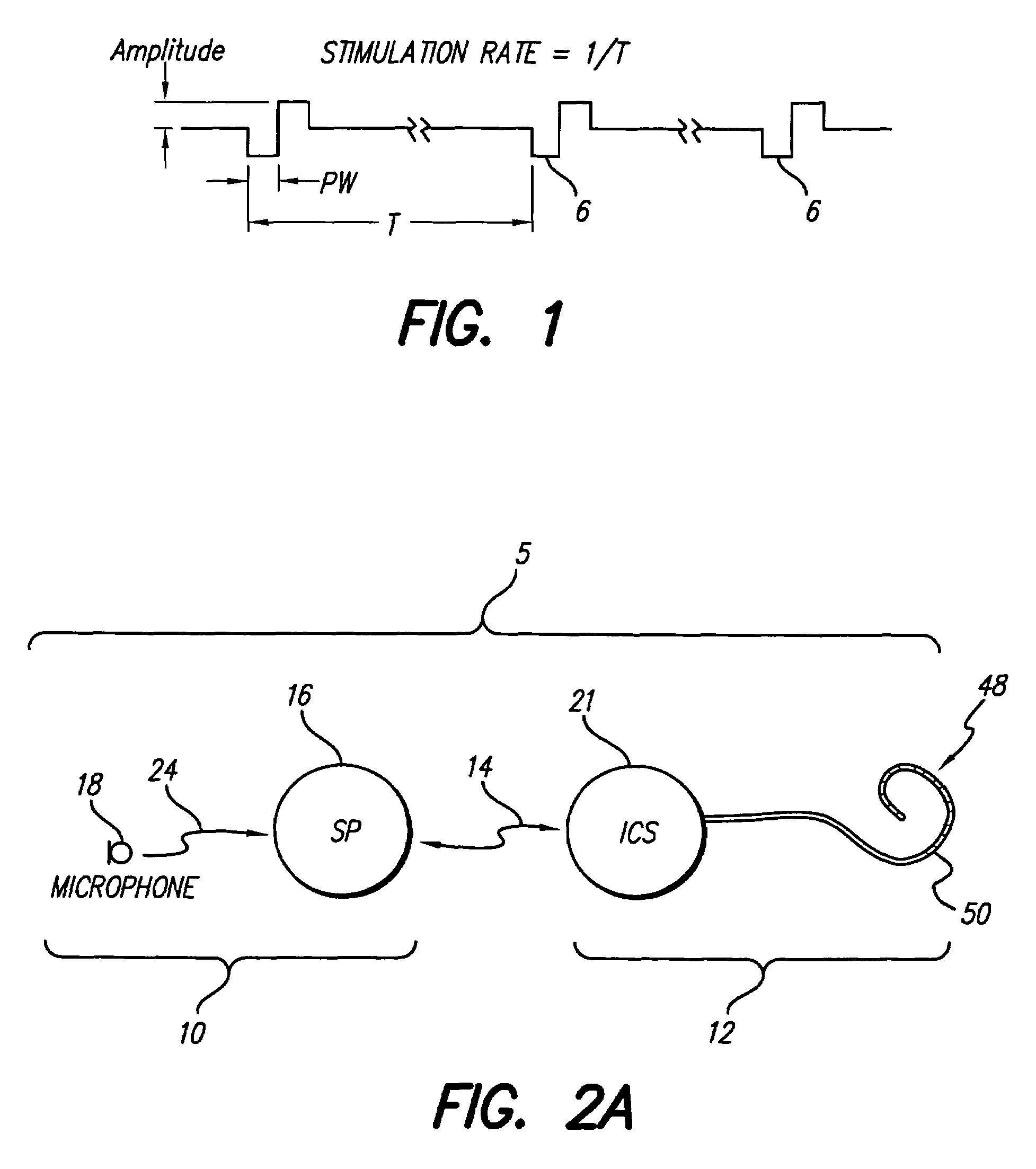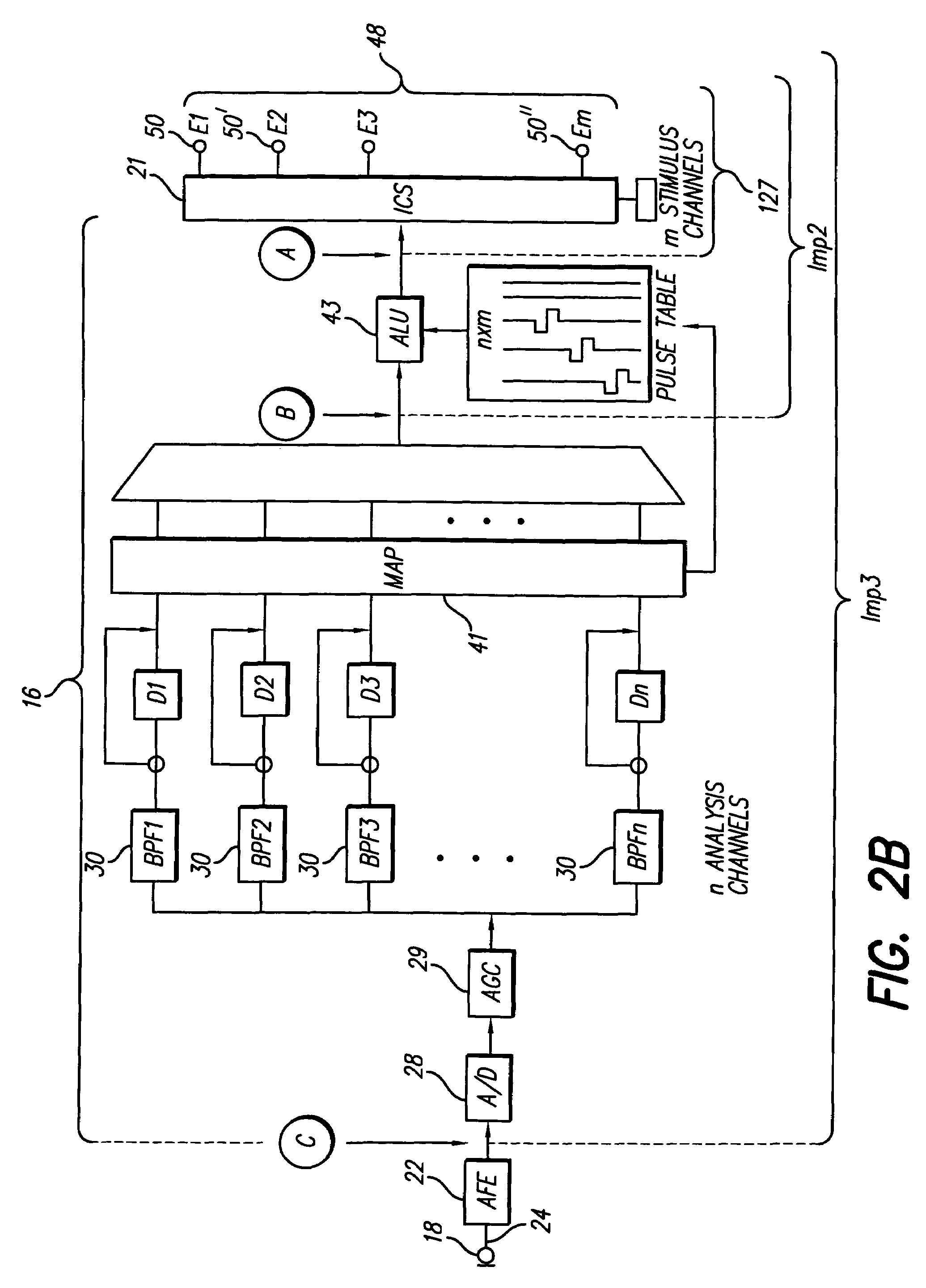Method and system to convey the within-channel fine structure with a cochlear implant
a cochlea implant and fine structure technology, applied in speech analysis, therapy, physical therapy, etc., can solve the problems of inability to accurately convey the fts spatially to the cochlea, poor stimulation of the spatial point or place on the length of the cochlea, and inability to accurately convey the fts spatially. to the cochlea
- Summary
- Abstract
- Description
- Claims
- Application Information
AI Technical Summary
Benefits of technology
Problems solved by technology
Method used
Image
Examples
Embodiment Construction
[0027]The following description is of the best mode presently contemplated for carrying out the invention. This description is not to be taken in a limiting sense, but is made merely for the purpose of describing the general principles of the invention. The scope of the invention should be determined with reference to the claims.
[0028]Before describing the present invention, it will be helpful to first provide an overview of the structure of a cochlear implant system that can be used to practice the present invention. This overview is provided below in connection with the description of FIGS. 1, 2A and 2B.
[0029]FIG. 1, shows a waveform diagram of a biphasic pulse train. The figure defines stimulation rate (1 / T), pulse width (PW) and pulse amplitude as those terms are commonly used in connection with a neurostimulator device, such as a cochlear implant, a spinal cord stimulator (SCS), a deep brain stimulator (DBS), or other neural stimulator. All such systems commonly generate biphas...
PUM
 Login to View More
Login to View More Abstract
Description
Claims
Application Information
 Login to View More
Login to View More - R&D
- Intellectual Property
- Life Sciences
- Materials
- Tech Scout
- Unparalleled Data Quality
- Higher Quality Content
- 60% Fewer Hallucinations
Browse by: Latest US Patents, China's latest patents, Technical Efficacy Thesaurus, Application Domain, Technology Topic, Popular Technical Reports.
© 2025 PatSnap. All rights reserved.Legal|Privacy policy|Modern Slavery Act Transparency Statement|Sitemap|About US| Contact US: help@patsnap.com



